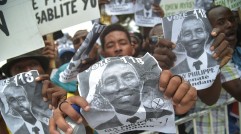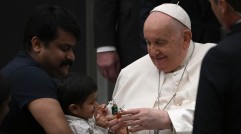MIT Researchers Serve Up Recipe for Baked Robots [Video]
It reads like a science-fiction story straight out of, well, a Betty Crocker cookbook.
Indeed, a research group at the Massachusetts Institute of Technology, MIT, has cooked up a new idea for robotic production that makes automatons simply assembled from parts produced by 3-D printers seem so 2013.
At this year's Institute of Electrical and Electronics Engineers International Conference on Robotics and Automation in Hong Kong, Daniela Rus, an MIT professor of electrical engineering and computer science, and a group of fellow collaborators took the lid off their latest invention: bakable robots.
In two recent papers, the researchers explained their recipe for printable robotic components that automatically fold into prescribed three-dimensional configurations when heated.
One paper describes a process that takes the digital specification of a 3-D shape -- such as a CAD, computer-aided design file -- and generates 2-D patterns that would enable a piece of plastic to reproduce it through self-folding.
The other paper explains how to build electrical components from self-folding laser-cut materials.
The researchers have unwrapped designs for resistors, inductors, and capacitors, along with sensors and actuators, all the electromechanical muscles that enable robots to move.
"We have this big dream of the hardware compiler, where you can specify, 'I want a robot that will play with my cat,' or 'I want a robot that will clean the floor,' and from this high-level specification, you actually generate a working device," Rus said in a news release.
Newly-discovered algorithms and electronic components could enable printable robots that self-assemble when heated.
The two research papers papers build on previous research that Rus did in collaboration with Erik Demaine, another MIT professor of computer science and engineering, whose previous work explored how origami could be adapted to create reconfigurable robots.
The differences in the new work, according to Shuhei Miyashita, a postdoc in Rus' lab and one of her co-authors on both papers, is a technique for controlling the angles at which a heated sheet folds.
Subscribe to Latin Post!
Sign up for our free newsletter for the Latest coverage!














